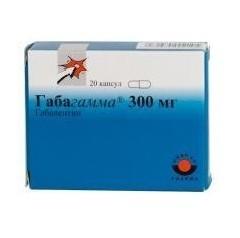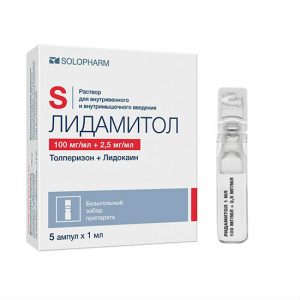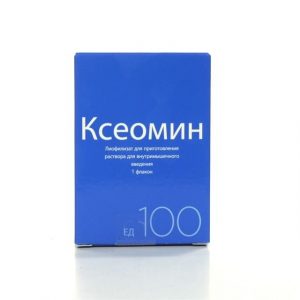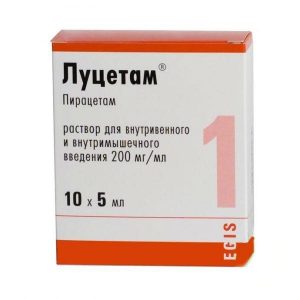Description
Release form
Capsules
Packing
20 pcs.
Pharmacological action
Gabagamma – antiepileptic drug. Gabapentin is similar in structure to the neurotransmitter gamma-aminobutyric acid (GABA), however, its mechanism of action is different from other drugs that interact with GABA receptors (valproate, barbiturates, benzodiazepines, GABA transaminase inhibitors, GABA uptake inhibitors, and GABA agonists GABA formulations ) It does not have GABA-ergic properties and does not affect the uptake and metabolism of GABA.
Preliminary studies have shown that gabapentin binds to the 2 – subunit of voltage-dependent calcium channels and reduces the flow of calcium ions, which plays an important role in the occurrence of neuropathic pain. Other mechanisms of action of gabapentin in neuropathic pain are a decrease in glutamate-dependent death of neurons, an increase in GABA synthesis, and suppression of the release of neurotransmitters of the monoamine group. Clinically significant concentrations of gabapentin do not bind to receptors of other common drugs or neurotransmitters, including GABAA, GABAB, benzodiazepine, glutamate and glycine NMDA receptors.
Unlike phenytoin and carbamazepine, gabapentin does not interact with sodium channels in vitro. Gabapentin partially attenuated the effects of the glutamate NMDA receptor agonist in some in vitro tests, but only at a concentration of more than 100 μmol, which is not achieved in vivo. Gabapentin slightly reduces the in vitro release of monoamine neurotransmitters.
Indications
adults and children from 12 years of age: in the complex treatment of partial seizures with or without secondary generalization
in adults: pain with diabetic neuropathy, postherpetic neuralgia.
Contraindications
Hypersensitivity to any of the components of the drug, acute pancreatitis, hereditary galactose deficiency, lactase deficiency, glucose-galactose malabsorption.
Precautions
Renal failure, psychotic illness.
Composition
1 capsule contains the active substance: gabapentin 300 mg
excipients: lactose, corn starch, talc, gelatin, titanium dioxide, iron oxide yellow, iron oxide red
Side effects
Cardiovascular system: symptoms of vasodilation or increased blood pressure, palpitations.
Digestive tract: flatulence, anorexia, gingivitis, abdominal pain, constipation, dental disease, anorexia, diarrhea, dyspepsia, increased appetite, dry mouth or throat, nausea, vomiting, dental disease, pancreatitis, increased activity of liver transaminase, hepatitis, jaundice, pancreatitis.
Blood system, lymphatic system: purpura (most often described as bruising during physical trauma), leukopenia, thrombocytopenia.
Musculoskeletal system: arthralgia, back pain, increased fragility of bones, myalgia.
Nervous system: dizziness headache hyperkinesis muscle dyskinesia and dystonia choreoathetosis increased, weakened or absent reflexes dysarthria ataxia nystagmus paresthesia seizures confusion increased fatigue asthenia amnesia depression impaired thinking hostility emotional lability sleepiness sleeplessness anxiety.
Respiratory system: pneumonia, bronchitis, dyspnea, respiratory infections, cough, pharyngitis, rhinitis.
Skin and subcutaneous tissue: acne, pruritus, skin rash, peripheral edema, erythema multiforme exudative (including Steven-Johnson syndrome).
Genitourinary system: urinary tract infection, impotence, urinary incontinence, acute renal failure.
Sensory organs: visual impairment, amblyopia, diplopia, tinnitus, otitis media.
Other: fever, viral infection, weight gain, plasma glucose lability in patients with diabetes mellitus, pain of various localization.
Overdose
Symptoms: dizziness, diplopia, speech impairment, drowsiness, lethargy, diarrhea, and increased severity of other side effects. Treatment: gastric lavage, intake of activated carbon, symptomatic therapy. Patients with severe renal failure may be shown hemodialysis.
Storage conditions
At a temperature not exceeding 25 ° C.
Deystvuyuschee substances
Gabapentin
Dosage form
capsules
Artes Pharma, Germany




